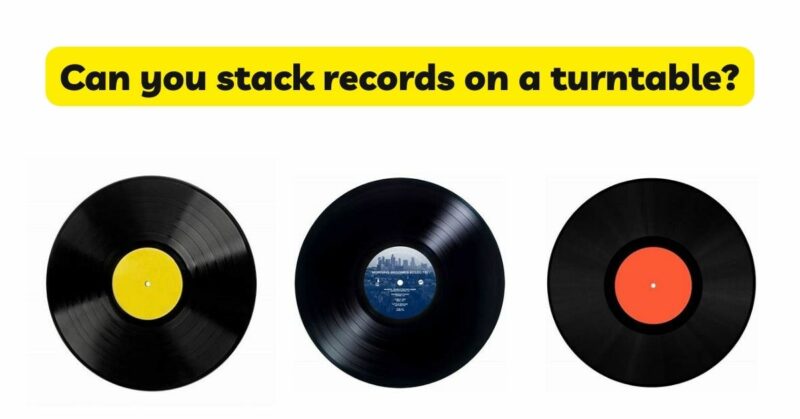The turntable serves as a centerpiece for vinyl enthusiasts, providing a platform for playing their beloved records. However, the question of whether it is acceptable to stack records directly on a turntable arises among collectors seeking convenience or space efficiency. In this article, we will explore the risks associated with stacking records on a turntable and discuss alternative storage options that prioritize the preservation of your vinyl collection.
The Risks of Stacking Records on a Turntable:
- Potential Damage to the Records: Stacking records directly on a turntable can lead to surface damage such as scratches, scuffs, or even warping. The movement of the turntable’s platter can cause records to shift or rub against each other, increasing the risk of physical harm. Even a slight misalignment can result in grooves being damaged or compromised, affecting the playback quality and potentially rendering the records unplayable.
- Risk of Needle and Stylus Damage: The delicate nature of turntable needles and styluses poses another concern. When records are stacked directly on the turntable, there is a heightened risk of accidental contact between the needle and the records, leading to potential damage. The needle can get caught on the edges or uneven surfaces of the stacked records, causing bending, misalignment, or even breakage.
- Stability and Tracking Issues: Stacking records on a turntable can compromise stability and tracking precision. The additional weight and uneven surfaces created by the stacked records can disrupt the balance and tracking of the turntable’s tonearm. This can result in skipping, jumping, or mistracking, ultimately compromising the sound quality and listening experience.
Alternative Storage Options:
- Vertical Storage: Vertical storage is the preferred method for maintaining the integrity and longevity of vinyl records. By storing records vertically, you eliminate the risks associated with stacking on a turntable. Utilize dedicated vinyl record storage solutions, such as shelves, crates, or storage units designed specifically for vinyl records. This method allows for easy access, reduces the risk of damage, and promotes better organization and preservation of your collection.
- Record Dividers and Organizers: Utilize record dividers or organizers to keep your vinyl collection organized and easily accessible. These dividers can be made of materials like acrylic, wood, or metal, and they help maintain proper spacing and prevent records from leaning or toppling. Dividers also provide additional support and protection, minimizing the risk of surface damage or warping.
- Protective Sleeves and Inner Sleeves: Use protective sleeves and inner sleeves to safeguard your records from dust, scratches, and other potential damage. Protective outer sleeves provide an extra layer of protection against environmental factors, while acid-free inner sleeves help reduce static and prevent surface scuffs. These protective measures help maintain the quality and longevity of your vinyl collection.
- Record Storage Boxes: Invest in record storage boxes or crates designed to hold vinyl records. These boxes offer secure storage, protect records from dust, and provide a stable environment that minimizes the risk of damage. Look for boxes made from sturdy materials, and ensure they provide proper support and cushioning for the records.
- Cleaning and Maintenance: Regularly clean and maintain your vinyl records to preserve their sound quality and longevity. Dust and debris can cause surface damage and affect playback. Use a carbon fiber brush or a record cleaning kit to remove dust before each play. Implementing a regular cleaning routine helps to maintain optimal sound quality and minimizes the risk of damage during playback.
Conclusion:
Stacking records directly on a turntable poses risks to the integrity and quality of your vinyl collection. The potential damage to the records, the risk of needle and stylus damage, and the stability and tracking issues make stacking an undesirable practice. To ensure the preservation and enjoyment of your vinyl records, opt for alternative storage options such as vertical storage, record dividers, protective sleeves, record storage boxes, and regular cleaning and maintenance. By prioritizing proper storage techniques and maintaining a careful approach to handling your vinyl collection, you can maximize the lifespan and quality of your records, ultimately enhancing your listening experience for years to come.


